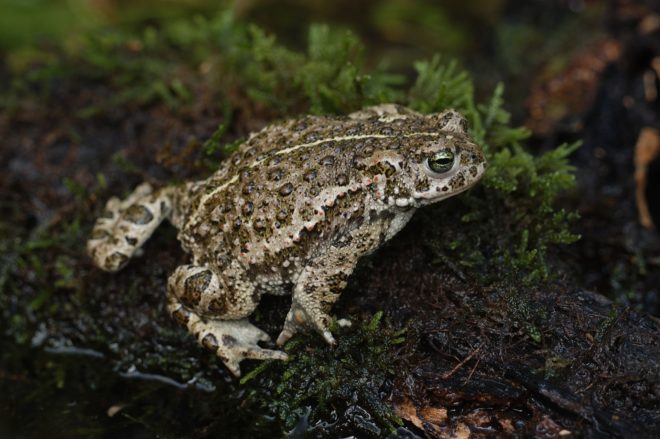A big win for nature as heathlands bounce back
December 9, 2021
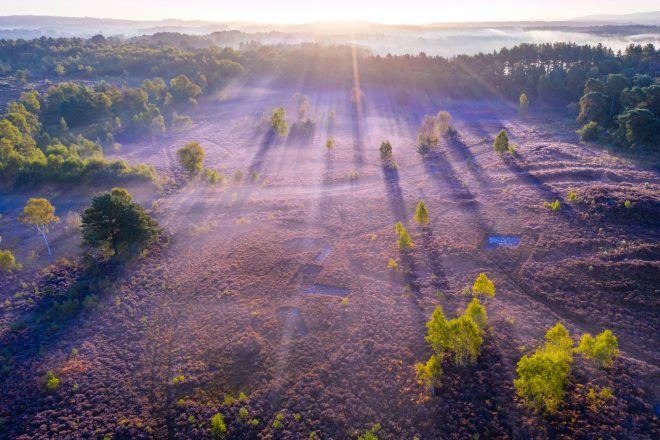
It’s a wildlife oasis rarer than the rainforest and home to some of Britain’s most endangered reptile, amphibian and bird species.
Now, five years on from the start of an incredible conservation effort, the future of heathlands in the south of England is looking much brighter.
The Heathlands Reunited project has successfully conserved and enhanced 23,825 hectares – or 18,000 football pitches – of lowland heath. An independent scientific assessment has revealed that the initiative has been “significant” in restoring the ecological condition of the habitat.
The £2m initiative started in 2016 after backing from the National Lottery Heritage Fund and is now coming to its conclusion.
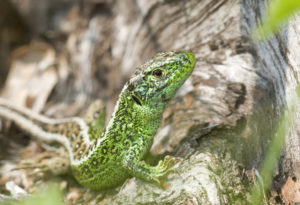 The project has seen amazing biodiversity success stories, including the return of the woodlark to key sites, recovery of the endangered field cricket, Dartford Warbler and Natterjack toad, and new habitat for the UK’s rarest lizard, the majestic sand lizard.
The project has seen amazing biodiversity success stories, including the return of the woodlark to key sites, recovery of the endangered field cricket, Dartford Warbler and Natterjack toad, and new habitat for the UK’s rarest lizard, the majestic sand lizard.
The project focused on heathland at 41 sites, stretching from Bordon, in Hampshire, to Pulborough in West Sussex. The need was profound because less than one per cent of former heathland remains in the National Park and what was left was very fragmented, leaving animals and plants vulnerable to extinction in these isolated “island” habitats.
Heathlands are, in fact, ‘man-made’ and only exist because our ancestors used them to dig peat for fuel, harvest heather and graze animals, unwittingly creating a unique mosaic of habitats which many plants and animals now can’t survive without.
Half a decade on and the project partners are celebrating some big achievements, including:
- Conserving almost 600 hectares of heathland by significantly increasing conservation grazing by cattle.
- A total of 366 hectares of heathland has benefited from conservation works to improve its condition, including scrub clearance, heather mowing, and bracken control, aimed at creating and connecting heathland.
- Woolmer Forest, a Site of Special Scientific Interest in Hampshire and home to 12 out of 13 of Britain’s native reptiles and amphibian species, has significantly improved and is now in “favourable condition” for wildlife.
- Supporting the reintroduction of the iconic field cricket to expand the number of surviving colonies, as part of the Back From The Brink project.
- Supporting the restoration of heathland for the reintroduction of the Natterjack toad next year at Blackmoor in Hampshire. It follows the purchase of 20 hectares of Blackmoor last year by the Amphibian and Reptile Conservation Trust – supported by fundraising, as well as Section 106 funds from the National Park Authority.
- Heathland bird surveys carried out in the project area show that protected bird numbers have increased over the five years of Heathlands Reunited, particularly the Dartford Warbler in East Hampshire. A survey of heathland sites in the district revealed the number of Dartford Warblers spotted went up from 36 in 2016 to 132 in 2021.
- After several years of absence, RSPB Pulborough has two successful successful breeding pairs of woodlark and has also seen an increase in the number of churring nightjars.
- A total of 349 events have taken place, with over 16,000 people participating in a range of activities aimed at raising awareness and encouraging people to care for their local heath.
- Nearly 115 volunteers have dedicated almost 50,000 hours to help look after the heaths.
- Reconnecting communities to their local heathland through the National Park’s first Sculpture Trail and a makeover to the 65-mile long Serpent Trail.
- Strong partnership of organisations working together to protect our lowland heath habitat for future generations.
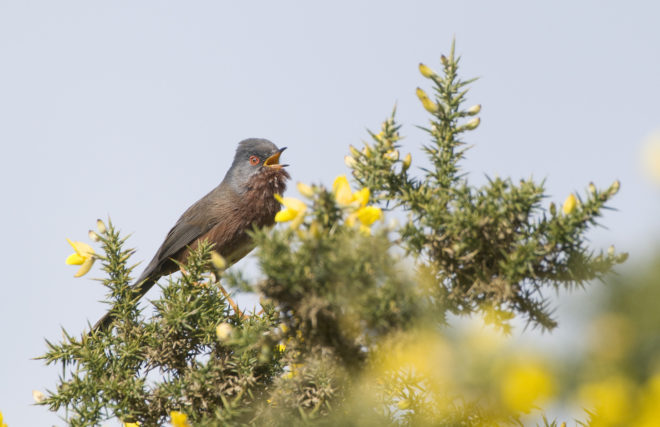
The project was delivered by 11 partners – Amphibian and Reptile Conservation, Forestry England, Hampshire and Isle of Wight Wildlife Trust, Hampshire County Council, Lynchmere Society, Ministry of Defence, National Trust, Natural England, RSPB, South Downs National Park Authority, and Sussex Wildlife Trust.
Andrew Lee, Director of Countryside Policy and Management at the National Park Authority, said: “We all know biodiversity is under unprecedented threat, but Heathlands Reunited is one of the success stories, showing how much can be achieved if we make space for nature. Seeing animals such as the woodlark, sand lizard and field cricket flourish once again is truly inspiring.
“I would like to thank each and every partner, volunteer and member of the public who has been part of this wonderful project. The fight to protect our heathlands will never be over, but I can safely say that our heaths are in a much better place than they were five years ago. The biggest thing we can all do to help them survive is to continue caring for them.
“The success of this project is the perfect springboard for our ambitious plan to ‘ReNature’ the South Downs, underlining how nature recovery at a landscape scale can tackle both the biodiversity and climate crisis. Crucially, it’s only possible because of people working together to make a difference.”
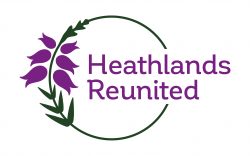 Rob Free, Weald Reserves Manager for Amphibian and Reptile Conservation, said: “ARC has been delighted to be part of this highly successful project. It has enabled us to improve the heathland habitat on our managed reserves at Woolmer Forest, Blackmoor, East Weavers Down and Broxhead. The icing on the cake for us, and a wonderful legacy for the Heathlands Reunited project, will be the reintroduction of Natterjack toads to Blackmoor in 2022 after an absence of 50 years now that the habitat is suitable for them once more.”
Rob Free, Weald Reserves Manager for Amphibian and Reptile Conservation, said: “ARC has been delighted to be part of this highly successful project. It has enabled us to improve the heathland habitat on our managed reserves at Woolmer Forest, Blackmoor, East Weavers Down and Broxhead. The icing on the cake for us, and a wonderful legacy for the Heathlands Reunited project, will be the reintroduction of Natterjack toads to Blackmoor in 2022 after an absence of 50 years now that the habitat is suitable for them once more.”
Cllr Edward Heron, Hampshire County Council’s Executive Member for Recreation, Heritage and Rural Affairs, said: “Heathlands are a vital element of Hampshire’s natural environment but these precious assets need careful management in order to survive. Thanks to funding from Heathlands Reunited, Hampshire County Council has been able to improve the resilience of Shortheath Common and Broxhead Common. Our teams have joined with volunteers and partners to restore heathland areas by controlling areas of bracken and removing invasive scrub. We are delighted that recent surveys are showing that biodiversity is thriving, including important field cricket colonies at Shortheath Common.”
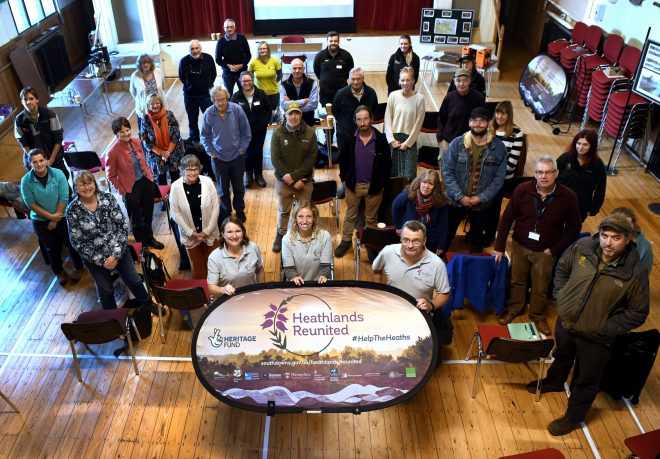
While the project has now officially comes to its conclusion, the Heathlands Reunited partnership will continue and the fight to save and restore heaths goes on under the Heathlands Reunited Wealden Heath SAMM project. This community-focused project brings together 12 like-minded organisations to raise awareness and encourage sustainable use of these sites through public engagement events and activities. The project focuses on the Shortheath Common Special Area of Conservation (SAC) and the Wealden Heath Special Protection Area (SPA) which sit in, and are on the boundary of, the South Downs National Park.
For more information visit www.southdowns.gov.uk/help-your-heaths
- The 18,000 football pitches represents the size of the project area (23, 825 hectares)
- For more information about the ReNature campaign, visit www.southdowns.gov.uk/renature/
